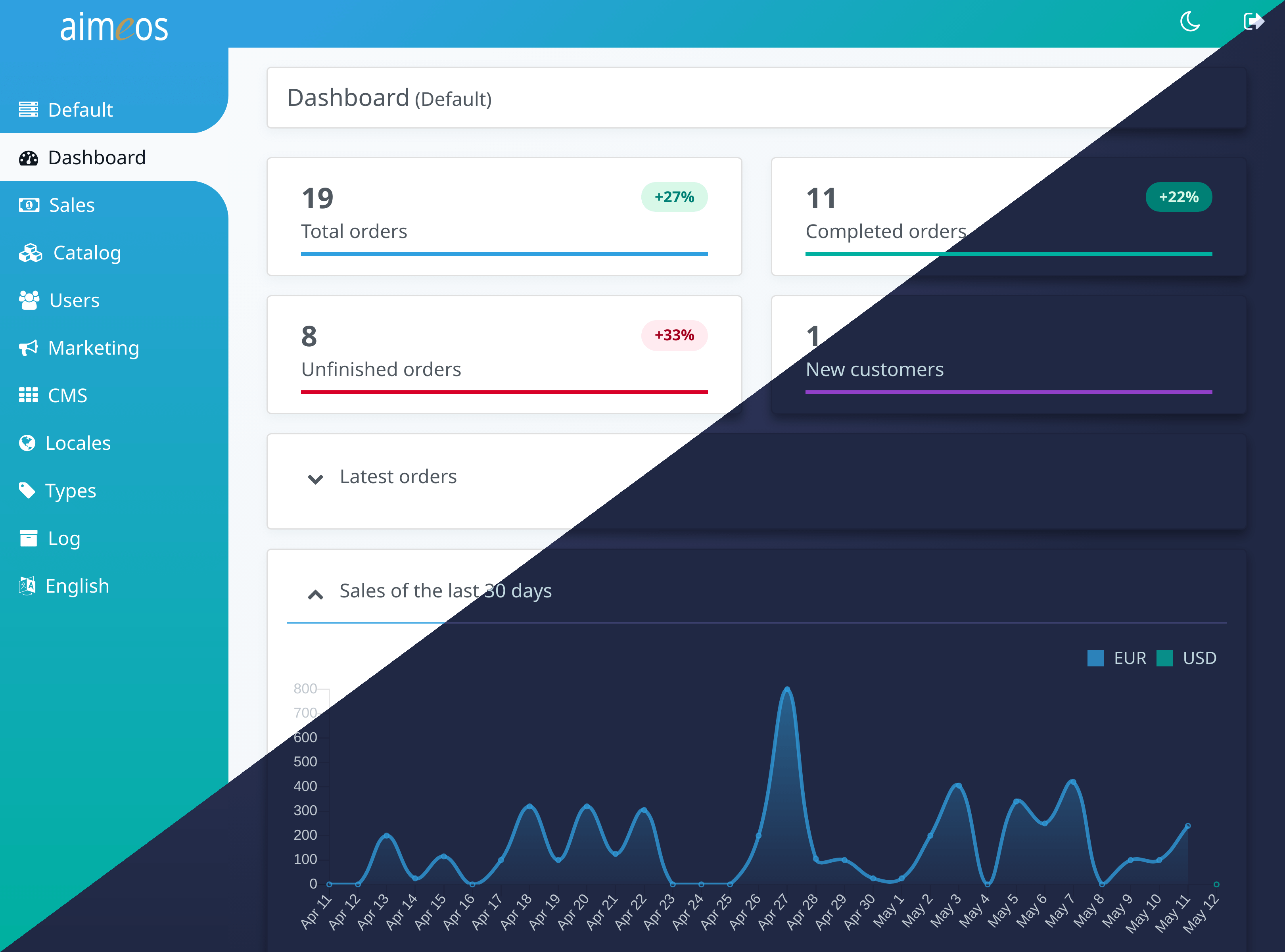This marketplace is a full-featured e-commerce package:
- Multi vendor, multi channel and multi warehouse
- From one to 1,000,000,000+ items
- Extremly fast down to 20ms
- For multi-tentant e-commerce SaaS solutions with unlimited vendors
- Bundles, vouchers, virtual, configurable, custom and event products
- Subscriptions with recurring payments
- 100+ payment gateways
- Full RTL support (frontend and backend)
- Block/tier pricing out of the box
- Extension for customer/group based prices
- Discount and voucher support
- Flexible basket rule system
- Full-featured admin backend
- Beautiful admin dashboard
- Configurable product data sets
- JSON REST API based on jsonapi.org
- GraphQL API for administration
- Completly modular structure
- Extremely configurable and extensible
- Extension for market places with millions of vendors
- Fully SEO optimized including rich snippets
- Translated to 30+ languages
- AI-based text translation
- Optimized for smart phones and tablets
- Secure and reviewed implementation
- High quality source code
Check out the demos:
The Aimeos Laravel online shop package is a composer based library. It can be installed easiest by using Composer 2.1+ in the root directory of your existing Laravel application:
wget https://getcomposer.org/download/latest-stable/composer.phar -O composer
php composer require aimeos/aimeos-laravel:~2023.04
Then, add these lines to the composer.json of the Laravel skeleton application:
"prefer-stable": true,
"minimum-stability": "dev",
"require": {
"aimeos/aimeos-laravel": "~2023.04",
...
},
"scripts": {
"post-update-cmd": [
"@php artisan migrate",
"@php artisan vendor:publish --tag=public --force",
"\\Aimeos\\Shop\\Composer::join"
],
...
}Afterwards, install the Aimeos shop package using
composer update
In the last step you must now execute these artisan commands to get a working or updated Aimeos installation:
php artisan vendor:publish --provider="Aimeos\Shop\ShopServiceProvider"
php artisan migrate
php artisan aimeos:setup --option=setup/default/demo:1In a production environment or if you don't want that the demo data gets
installed, leave out the --option=setup/default/demo:1 option.
You have to set up one of Laravel's authentication starter kits. Laravel Breeze is the easiest one but you can also use Jetstream.
composer require laravel/breeze
php artisan breeze:install
npm install && npm run buildLaravel Breeze adds a route for /profile to ./routes/web.php which may overwrite the
aimeos_shop_account route. To avoid an exception about a missing aimeos_shop_account
route, change the URL for these lines from ./routes/web.php file from /profile to
/profile/me:
Route::middleware('auth')->group(function () {
Route::get('/profile/me', [ProfileController::class, 'edit'])->name('profile.edit');
Route::patch('/profile/me', [ProfileController::class, 'update'])->name('profile.update');
Route::delete('/profile/me', [ProfileController::class, 'destroy'])->name('profile.destroy');
});For more information, please follow the Laravel documentation:
As a last step, you need to extend the boot() method of your
App\Providers\AuthServiceProvider class and add the lines to define how
authorization for "admin" is checked in app/Providers/AuthServiceProvider.php:
public function boot()
{
// Keep the lines before
\Illuminate\Support\Facades\Gate::define('admin', function($user, $class, $roles) {
if( isset( $user->superuser ) && $user->superuser ) {
return true;
}
return app( '\Aimeos\Shop\Base\Support' )->checkUserGroup( $user, $roles );
});
}Test if your authentication setup works before you continue. Create an admin account for your Laravel application so you will be able to log into the Aimeos admin interface:
php artisan aimeos:account --super <email>The e-mail address is the user name for login and the account will work for the
frontend too. To protect the new account, the command will ask you for a password.
The same command can create limited accounts by using --admin, --editor or --api
instead of --super (access to everything).
To reference images correctly, you have to adapt your .env file and set the APP_URL
to your real URL, e.g.
APP_URL=http://127.0.0.1:8000
Caution: Make sure, Laravel uses the file session driver in your .env file!
Otherwise, the shopping basket content won't get stored correctly!
SESSION_DRIVER=file
If your ./public directory isn't writable by your web server, you have to create these
directories:
mkdir public/aimeos public/vendor
chmod 777 public/aimeos public/vendor
In a production environment, you should be more specific about the granted permissions!
Then, you should be able to call the catalog list page in your browser. For a quick start, you can use the integrated web server. Simply execute this command in the base directory of your application:
php artisan serve
Point your browser to the list page of the shop using:
Note: Integrating the Aimeos package adds some routes like /shop or /admin to your
Laravel installation but the home page stays untouched! If you want to add Aimeos to
the home page as well, replace the route for "/" in ./routes/web.php by this line:
Route::group(['middleware' => ['web']], function () {
Route::get('/', '\Aimeos\Shop\Controller\CatalogController@homeAction')->name('aimeos_home');
});For multi-vendor setups, read the article about multiple shops.
This will display the Aimeos catalog home component on the home page you you get a nice looking shop home page which will look like this:
If you've still started the internal PHP web server (php artisan serve)
you should now open this URL in your browser:
Enter the e-mail address and the password of the newly created user and press "Login".
If you don't get redirected to the admin interface (that depends on the authentication
code you've created according to the Laravel documentation), point your browser to the
/admin URL again.
Caution: Make sure that you aren't already logged in as a non-admin user! In this case, login won't work because Laravel requires you to log out first.
To simplify development, you should configure to use no content cache. You can
do this in the config/shop.php file of your Laravel application by adding
these lines at the bottom:
'madmin' => [
'cache' => [
'manager' => [
'name' => 'None',
],
],
],



